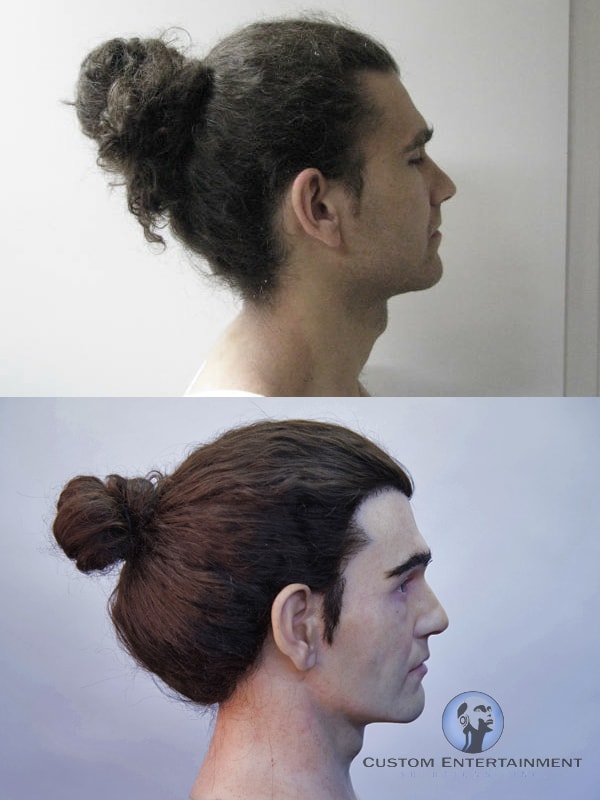
One of the most fascinating aspects of the animatronics industry is creating lifelike representations of both humans and animals. Yet despite all of the intriguing elements of such design, the one thing that has plagued animatronic experts for years is coming up with a skin product that will move and flex in a way that accurately mimics human facial expressions. Even back in 1988, Stan Winston’s John Rosengrant and Shane Mahan were experimenting with different densities/softness in certain parts of Pumpkinhead’s face alone. Previous to this most animatronic skins made for theme park animatronics were (and in some cases still are) a flavor of vinyl that is about as stiff as shoe rubber!
Putting actual skin into the game is one of the most difficult aspects of human animatronics. The chosen material for any given project not only has to look realistic in terms of tone and color, but also in the way it moves and reacts to the underlying mechanisms that function as muscles. To the delight of animatronic designers everywhere, technology in this area is fast advancing.
Animals and Humans Are Different
When you are dealing with animals, skin is not as critically important. Why? Because most of the animals an animatronic studio might duplicate either have hair covering their entire bodies or their movements are somewhat limited. In addition, animals rarely provide facial expressions that need to be duplicated. That said, there has been some incredible work done for the very hairy gorilla-like creatures in “Attack the Block” where every muscle was sculpted and slid on top of each other in a spandex covering. Does it show under that 3” of black fur? That’s a good question…
When it comes to people on the other hand, facial expressions are an integral part of the overall presentation. We humans are trained to pay attention to facial expressions when communicating with other people, as those expressions give us clues as to an individual’s intent and purpose. So even when looking at animatronic figures, our natural reaction is to pay close attention to the face.
How Expression Is Accomplished
One of the services Custom Entertainment Solutions is now offering is our new Android Doppelgänger Replication. This service allows our customers to have a custom doppelgänger replicated for anyone, just by supplying us with photographs and a bit of information about the individual. Yet in order to make these doppelgängers as realistic as possible, we have to pay attention to the skin.
The proprietary composite polysiloxane material used for the skin must be implemented with the following considerations:
- Color and Tone – Skin color and tone must be realistic down to the slightest blemishes that give a human face its character. A completely uniform skin tone with no blemishes looks noticeably fake.
- Thickness – One of the ways we add realism to facial expressions is to adjust the thickness of the skin in specific locations. Thickness directly affects how the skin will move and change shape.
- Fit – When we apply the skin to an animatronic face, it must fit a certain way in relation to eye sockets, ears, nose and mouth. Again, this will influence how the skin moves when the internal mechanisms are adjusted to account for facial expression.
Other Body Parts
Although the skin used for animatronic heads is of primary importance, other body parts need realistic skin if they play an important role in presenting an accurate allusion. Our Magic Animatronic Hands provide a good example. When animatronic hands need to realistically include motion, the skin must look and move as accurately as it does on the face. Fortunately, it is a lot easier to accomplish with hands.
Next time you consider all the work and effort that goes into making a realistic humanoid android, just consider how complex the skin is. And you thought skin was just a vehicle enabling you to get a good tan!



2013